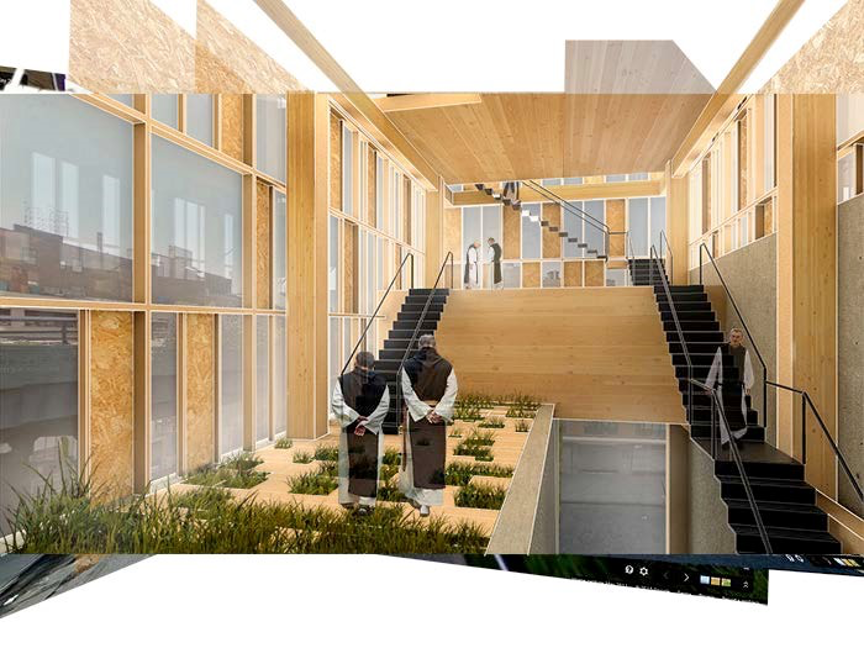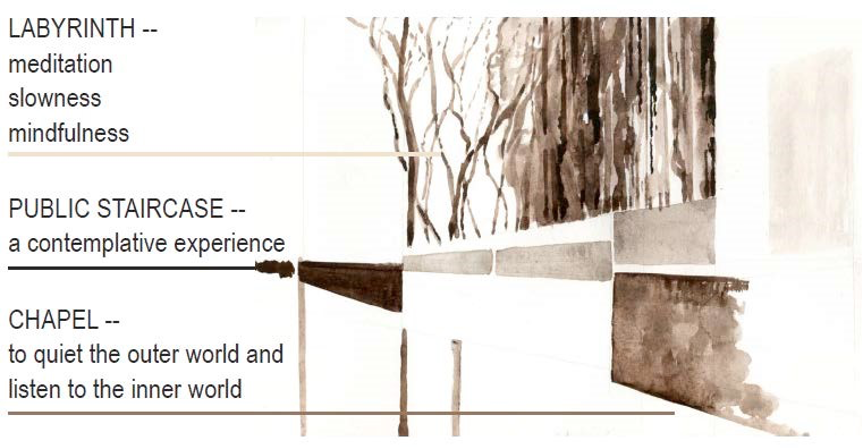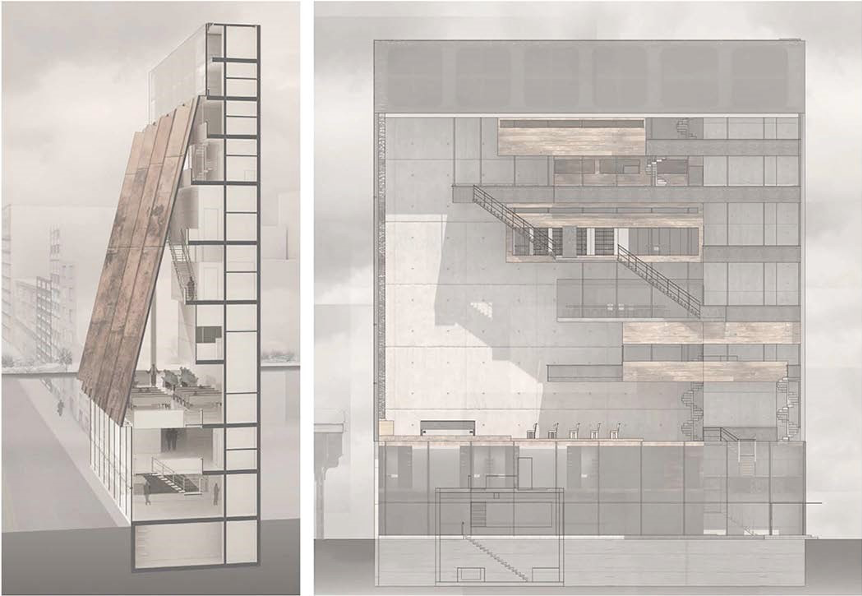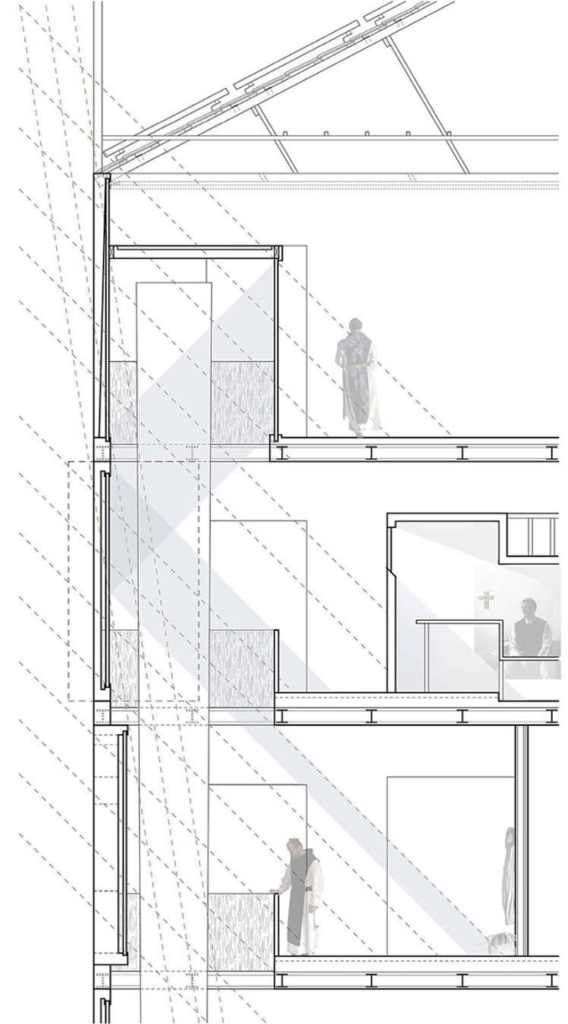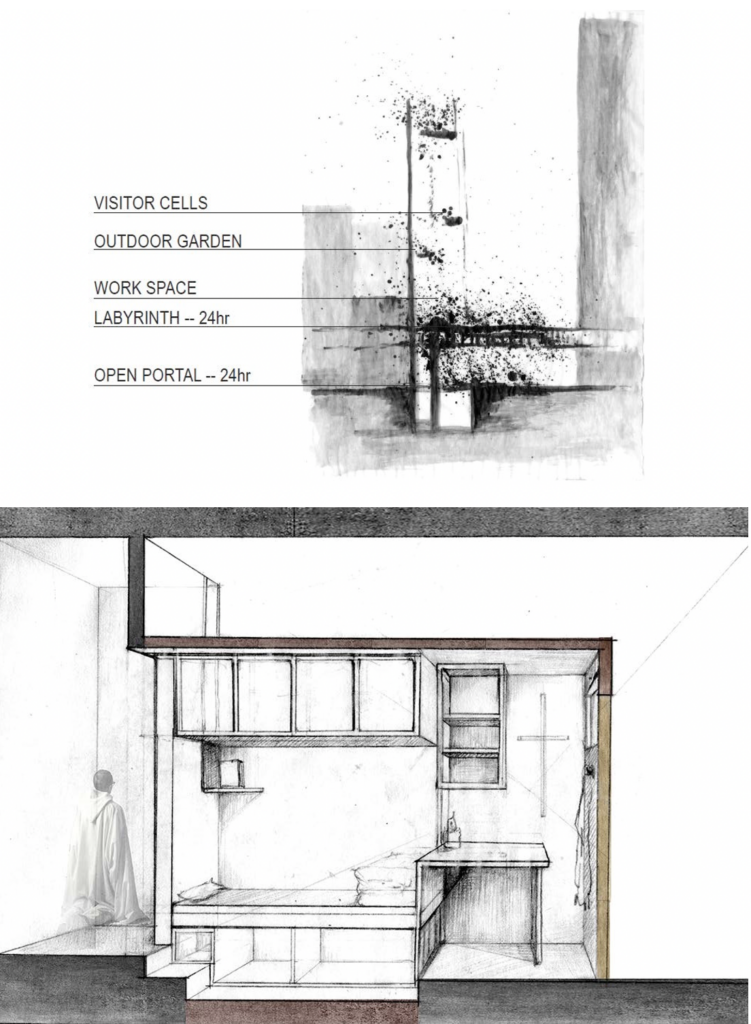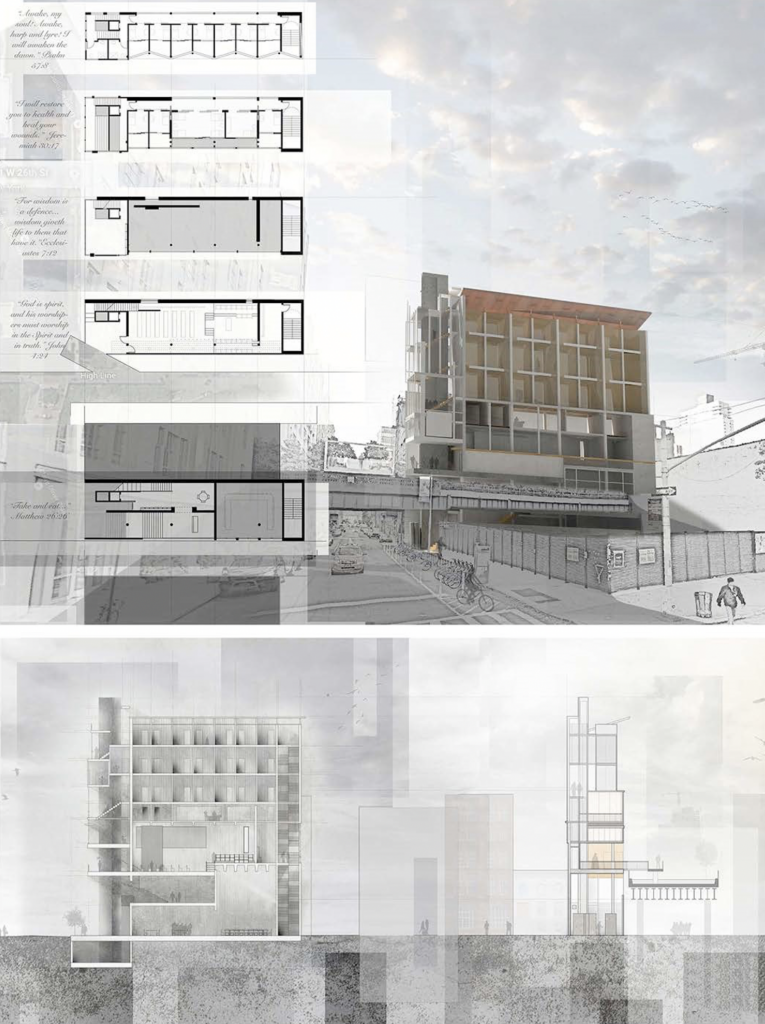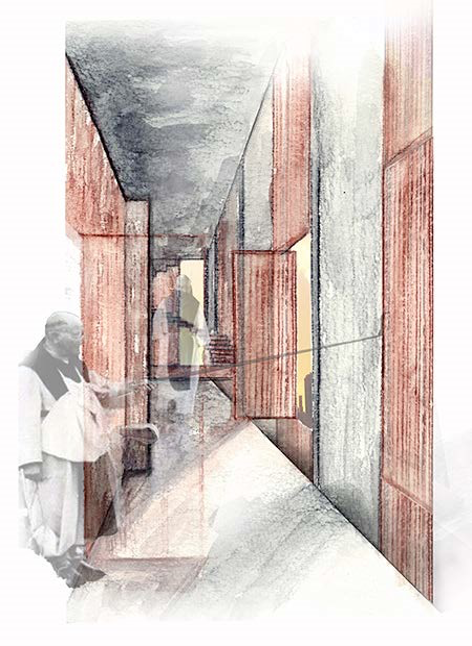Phoebe Crisman
University of Virginia, Charlottesville, Virginia
crisman@virginia.edu
“for then are they monks in truth,
if they live by the work of their hands”
– St. Benedict
Our senses are bombarded with aggressive media images, ever-present noise, and hermetic fluorescent spaces that disconnect us from the diurnal cycle. Yet, specific design strategies can heighten or quiet the senses. Students in my undergraduate architecture studio explored how the constructed environment can influence human health and wellness by encouraging embodied awareness, thereby promoting appreciation of the world’s diversity and our place within it. They designed a Monastery along the New York Highline that supported individual and collective contemplation, worship, work, and rest. The Order of Cistercians of the Strict Observance, or Trappists, are cloistered contemplative monastics who follow the Rule of St. Benedict. They open their chapels to the public and sustain their community with the production and sale of handmade goods. Their lives focus on both contemplation and manual work, in accordance with the Order’s tenet of economic self-sufficiency. While typically living in the countryside, the challenge was to design a narrow and vertically composed urban community embodying Trappist values of simplicity, frugality, beauty, and a close relationship with the natural world. Students designed rooms and gardens promoting health and happiness, while minimizing resource consumption. They explored concepts of interiority, framing, tactile, and aural and visual qualities. Disrupting habitual thought and deepening awareness in inhabitants and passersby, the monastery was designed to educate about spirituality and sustainability—essentially a model of sustainable communal living in the city. The designs went beyond supporting human need to fulfill emotional, intellectual, and spiritual aspirations—and to foster individual and community well-being.
